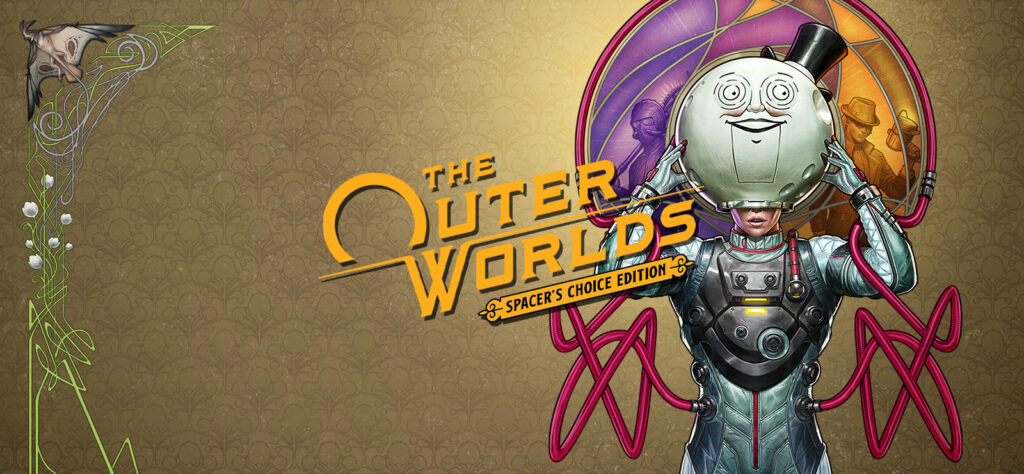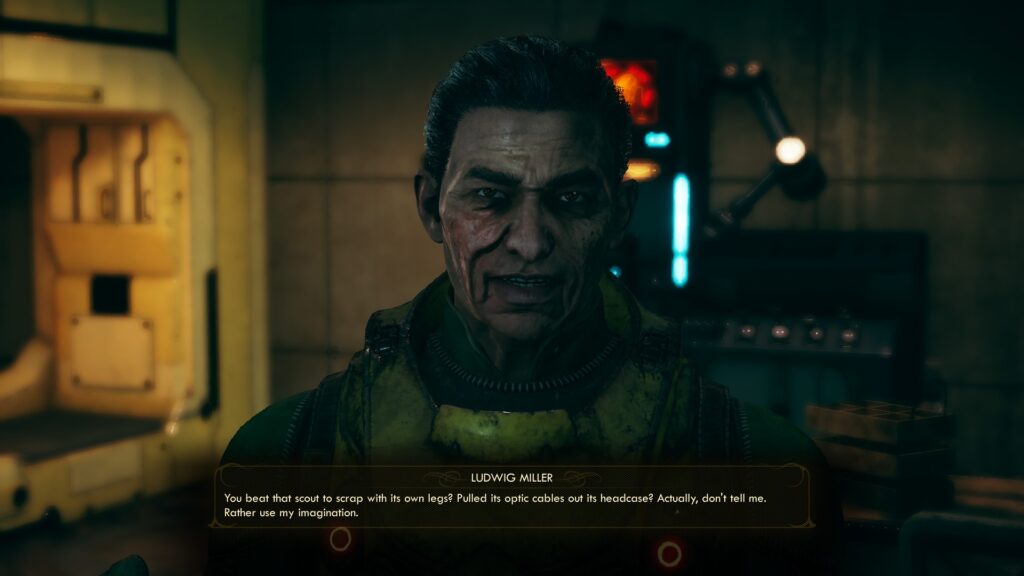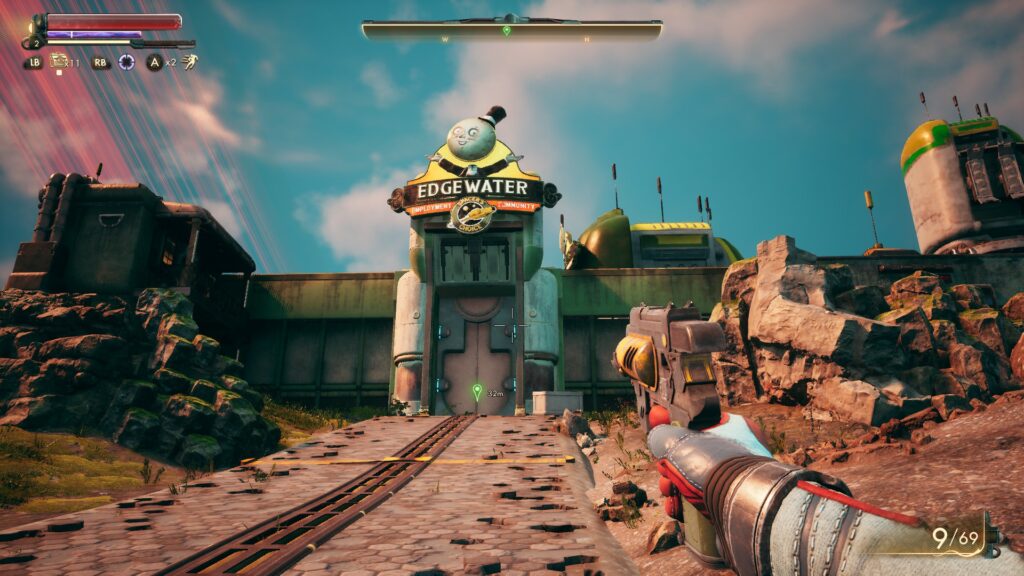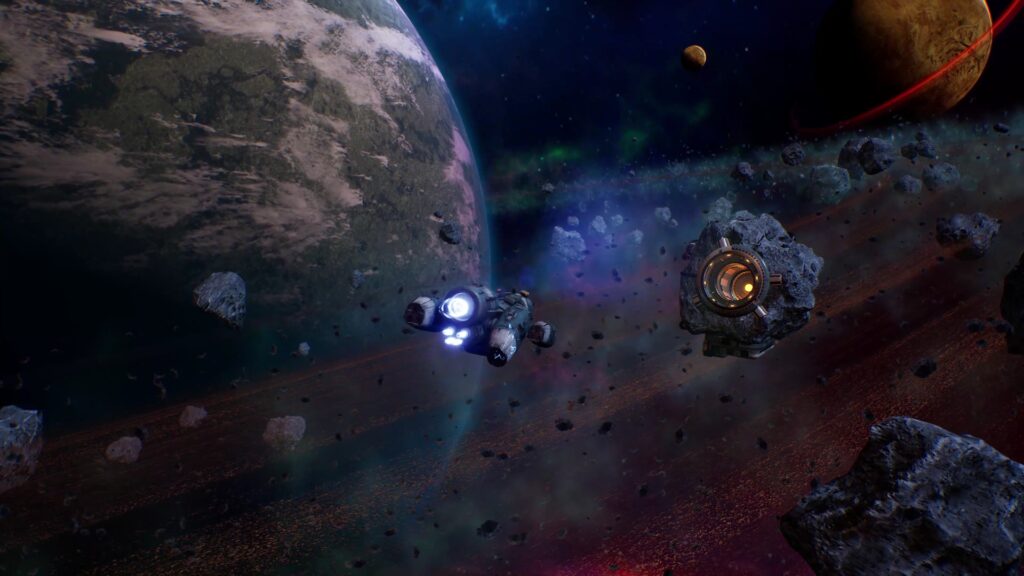
Developer: Obsidian Entertainment
Publisher: Private Division
Platforms: PC, PS, Xbox Series X|S
Tested on: PC
The Outer Worlds: Spacer’s Choice Edition – Review
The original version of The Outer Worlds debuted in 2019, and the game’s last DLC, Murder on Eridanos arrived around two years ago, in March of 2021. It seems a bit fast then, that we’re getting a remaster of Obsidian’s beloved open world space adventure already, yet here we are. With the so-called Spacer’s Choice Edition, publisher Private Division is aiming to not just draw new colonists to Halcyon, but also for existing owners of the game to spend some of their hard-earned credits to experience The Outer Worlds in a new light. Should you sign up for this once-in-a-lifetime opportunity or is it better to read the fine print first?
Story
Being an open-world game, The Outer Worlds doesn’t necessarily have a set story, as the player is given a ton of freedom and choices that affect the events that happen around them. The base premise remains the same, of course, and we’ll quickly recap it for those that are unfamiliar. Set in an alternate timeline, where humanity has ventured into space, The Outer Worlds puts players in the shoes of a passenger that was aboard the Hope, a massive spaceship intended to bring colonists to Halcyon, a galaxy where humans now have set up several colonies. Disaster struck, however, and the Hope was lost in the vastness of space, drifting for seventy years. That is, until rogue scientist Phineas Welles shows up, aiming to rescue the colonists aboard the Hope. Welles manages to rescue and revive the player and then enlists them to help out with his plan to recover the other passengers of the Hope. As Welles himself is wanted by the Board of Halcyon, he teams up the passenger with the smuggler captain Alex Hawthorne. Unfortunately, Hawthorne ends up being crushed underneath an escape pod, leading to the player taking on Hawthorne’s identity as captain of the Unreliable.
After the opening, the player’s training wheels are removed and although there is a main storyline, which unfolds depending on which choices the player makes, there is a tremendous amount of freedom here. Despite the futuristic setting, The Outer Worlds carries the air of a Western, with the adventure on the first planet in particular feeling like it could’ve been the base of a cowboy story just as much as a space adventure. There is a ton of replayability here too, with storylines that really force the player to make moral choices. Finally, the addition of dark and cynical humor adds another layer, and we’d go as far as to say that The Outer Worlds’ writing is perhaps the game’s strongest suit.
Graphics
It’s not often that the audiovisual aspects of a game take up the bulk of a review, but in the case of The Outer Worlds, these aspects are perhaps the main reason to pick up or (avoid) the Spacer’s Choice Edition. After all, beneath all the alleged fancy new bells and whistles, the game remains exactly the same under the hood as the previous release, albeit, with one change that affects gameplay. We’ll get back to that a bit further down in the gameplay section of this review, but first, let’s take a look at what’s new in terms of visuals. Full disclosure: while our fellow reviewer took a look at the base game back in 2019 on PS4, yours truly played through the game’s Switch version, which does affect our perception of this Spacer’s Choice Edition. The Switch version of The Outer Worlds was a blurry, muddy mess when it initially launched, and although it has received numerous performance patches since, it’s a far cry from any other versions. We’d even say that it was a miracle that Obsidian got the game to run on the hybrid handheld in the first place.
So what exactly is supposed to have been improved here? Well, everything. Character models were overhauled to look more realistic, with improved detail in terms of skin and hair. New shaders and lighting changes ensure that the environment looks more alive and realistic, and you are able to tweak and finetune the visuals so that the performance matches your hardware, enabling it to run as smooth as butter too. That all sounds fine in theory, but in practice, things end up slightly differently. For starters, there seems to be somewhat of an issue with the game’s detection of optimal system settings, as everything was cranked up to the max when we started playing, and we had to significantly downscale the visuals in order to make The Outer Worlds even run properly in the first place. We initially thought that the initial poor performance had to do with the fact that we were running the game on a 2-year-old laptop with an i5 processor and a GTX 1650 Ti graphics card, but from what we gather on the game’s official Steam page, this has less to do with our hardware and more with poor optimization on behalf of Private Division. The Outer Worlds itself is a fantastic game, with a dedicated fan base, and the general consensus of that same fan base is that this is a cynical cash grab that neither Microsoft nor Obsidian had any control over, with the blame being solely in Private Division’s camp.
There is a beautiful irony in how this release is titled the Spacer’s Choice Edition then, as the in-game brand of the same name is known for releasing shoddy products, with their slogan being “It’s not the best choice, it’s Spacer’s Choice.” Admittedly, we cannot make a fair comparison to the previous release of the base game, and as we mentioned, this version of the game still offers a visual step up compared to the Switch port, but that’s a rather low bar to clear. Fans have cynically started calling this a “ten dollar performance patch”, and a bad one at that, with people encountering issues even when running the game on powerful hardware unless they downgraded the settings. One has to wonder then what the point of upgrading your copy of the game is, if the end result ends up looking exactly the same once you’re done tweaking things to make it run properly. We’re not saying that this version is unplayable, far from it, but it seems utterly redundant in its current state.
Sound
According to the press release that accompanied the Spacer’s Choice Edition, the audio received a significant overhaul as well, although in practice this is perhaps less noticeable. The game’s dialogue was supposedly redubbed, though whether this means that everything was re-recorded or if a higher quality master was used remains unclear. The audio does sound crisp and clear, however. Justin E. Bell’s soundtrack in particular has never sounded better, although any tweaks to the crispness can’t be attributed to him as he left Obsidian in 2021 to go work for PlayStation.
Gameplay
As we mentioned earlier, nothing has really changed in terms of gameplay. What you’re getting here is still the same fantastic Fallout-like open-world space western. This edition of the game includes both of the previously released DLCs, Peril on Gorgon and Murder on Eridanos, and the one gameplay change that was implemented here is that characters can now be leveled up to 99 instead of 36. That’s a pretty significant step up, but that doesn’t mean that you’ll be over-leveling your stats any day soon. Having a higher level doesn’t necessarily mean that you’ll become significantly more powerful as individual stats still are capped. What it does mean is that you’ll have a lot more freedom in terms of character development as you are now able to invest in all the different stats without having to worry about min-maxing. If you happen to own the earlier edition of the game on a platform that has access to the Spacer’s Choice Edition, you should be able to upgrade your existing copy, which doesn’t just let you save some of your hard-earned cash, but also enables you to continue from a previous save with the new level cap. That said, we can’t really advise doing so given the game’s current state, and we recommend waiting for a couple of performance patches before committing.
One final gripe we did have was that the PC version of The Outer Worlds does not offer gyroscopic aiming. This is something that is implemented in the Switch version, and we even hooked up a Switch Pro Controller to our PC to give the game a spin. Everything then played exactly like we remembered with the exception that we had to aim manually. This is a very minor issue that is probably not even going to bother a single percent of the player base, but it irked us enough to warrant mentioning it here. Granted, this was probably also absent from the previous release on PC, but it would have been nice if the game offered the option to enable this when using a compatible controller.
Conclusion
Unless there is a significant amount of patching up planned for the Spacer’s Choice Edition of The Outer Worlds, it’s perhaps better to steer clear and stick to the regular release. Not only can you pick it up at a significantly cheaper price point, even with the DLC, but you’d also be sending a signal to Private Division that shoddy re-releases like this are not okay. We’d even go as far as to say that we actually prefer the Switch release over this one, as at least that version offers gyroscopic aiming. All in all, The Outer Worlds is a fantastic game that deserves better than this. Hopefully, enough effort is put into bringing the Spacer’s Choice Edition in line with peoples’ expectations over the coming months, and if not, then at least the base game still exists and is worth picking up instead.
The Outer Worlds: Spacer's Choice Edition - Review,









No Comments